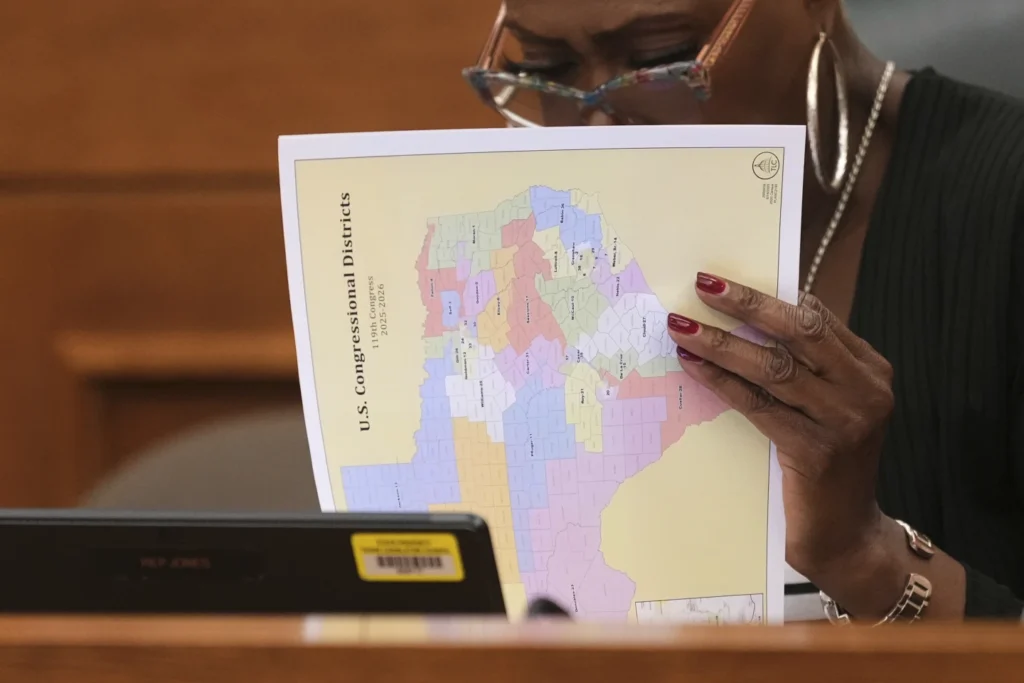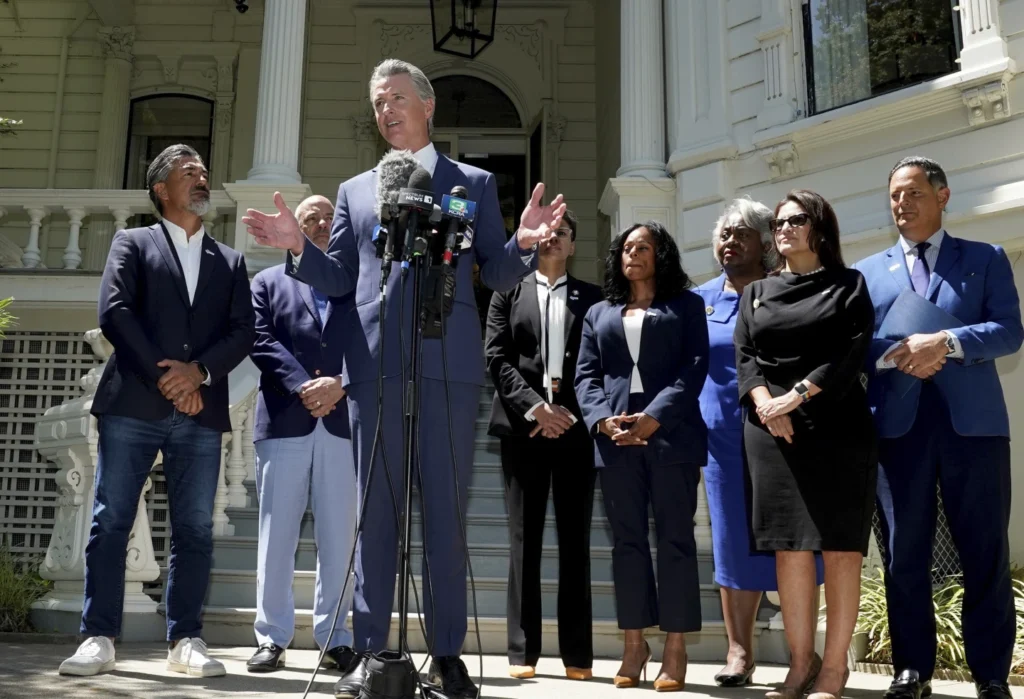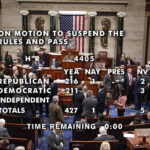California Plans Redistricting to Eliminate Five GOP Seats/ Newslooks/ WASHINGTON/ J. Mansour/ Morning Edition/ California Democrats are considering a new congressional map that could eliminate five GOP-held House seats. The move is a direct response to Texas Republicans’ redistricting push to expand their House majority ahead of the 2026 elections. Gov. Gavin Newsom has hinted at calling a special election to enact the new plan.

Redistricting Power Play Quick Looks
- California’s new draft map could remove five Republican seats
- Democratic majority could increase from 43 to 48 of 52 seats
- Targeted GOP districts include Calvert, Issa, Kiley, Valadao, LaMalfa
- Competitive Democratic districts would be fortified in the redraft
- Newsom says plan depends on Texas halting its redistricting
- Voters would need to approve new maps in a special election
- Proposal challenges California’s independent redistricting precedent
- Democrats respond to Trump-aligned GOP map-making in Texas
- Political stakes rise ahead of 2026 House control battle
- Proposal still in draft form, briefed to Democratic lawmakers privately
Deep Look: California Democrats Target Five GOP Seats in Redistricting Retaliation
LOS ANGELES (AP) — In a bold countermove to Texas Republicans’ attempt to redraw their congressional map in favor of the GOP, California Democrats are circulating a draft redistricting proposal that could eliminate five Republican-held U.S. House seats and boost their own margin to 48 out of 52 seats statewide.
The initiative, quietly developing behind closed doors, is intended to counter President Donald Trump’s push to expand Republican control in Congress ahead of the 2026 midterms. According to a source with direct knowledge of the plan—speaking anonymously due to its sensitive nature—California’s draft map would strategically reshape districts to favor Democratic candidates.
Targeting Vulnerable GOP Seats
The five Republican-held districts at risk under the proposed changes are currently represented by Reps. Ken Calvert, Darrell Issa, Kevin Kiley, David Valadao, and Doug LaMalfa. These areas would be redrawn to include larger populations of Democratic-leaning voters while shaving off conservative strongholds—making it significantly harder for Republicans to retain them.
Additionally, the redrawn map would fortify Democratic strongholds in battleground areas such as Orange County, San Diego County, and the Central Valley, which are home to competitive districts represented by Reps. Dave Min, Mike Levin, and Derek Tran. Their seats would gain additional Democratic buffer zones to reduce the chance of GOP flips.
A New Political Map—If Texas Doesn’t Back Down
Gov. Gavin Newsom, who has increasingly voiced support for a partisan redistricting strategy, said Monday he would only move forward if Texas proceeds with its Trump-aligned redistricting agenda.
“California will not sit by idly and watch this democracy waste away,” Newsom said at a press conference, flanked by Texas legislators.
Should Texas advance its map, Newsom indicated he would call a special election in early November, allowing California voters to decide whether the Democratic-controlled Legislature’s new congressional map should take effect.
Challenging the Independent Redistricting Model
The proposal marks a stark departure from California’s commitment to a nonpartisan redistricting process. Voters in the state previously approved a ballot initiative to create an independent redistricting commission, insulating map-drawing from partisan influence.
However, the draft plan in circulation bypasses that model, drawing concern from some political observers and raising questions about whether voters would accept a reversal of that principle—even in the name of political counterbalance.
The move reflects increasing Democratic frustration with GOP-led redistricting efforts in Republican-controlled states. Texas, in particular, has sought to bolster its 25-seat GOP House delegation through redistricting, prompting Democrats in California to adopt a more aggressive strategy.
Private Briefings and Party Coordination
Democratic members of California’s congressional delegation were briefed on the draft plan during a private meeting on Monday, according to insiders familiar with the session. The briefing covered specific seat targets and possible voter realignments, but discussions remain ongoing.
Several Democrats in Washington have called for a multi-state strategy to resist Republican redistricting moves, particularly those viewed as threatening to democratic norms. Newsom’s plan—if enacted—could serve as the blueprint for other Democratic-majority states exploring retaliatory gerrymanders.
High Stakes for 2026 Midterms
The House of Representatives remains narrowly controlled by Republicans, and Trump’s strategy to gain more seats in Texas is viewed as a critical component of maintaining or expanding that margin. Should California counter with its own plan, the GOP advantage could be blunted or even reversed.
Still, legal challenges and voter skepticism could stall or unravel the effort. While Newsom has significant political capital in the state, he may face opposition from those who view partisan redistricting—no matter the party—as a threat to democratic integrity.
The national implications are enormous. With just a handful of seats determining House control, California’s redistricting response to Texas could decide which party writes federal legislation through 2028.







